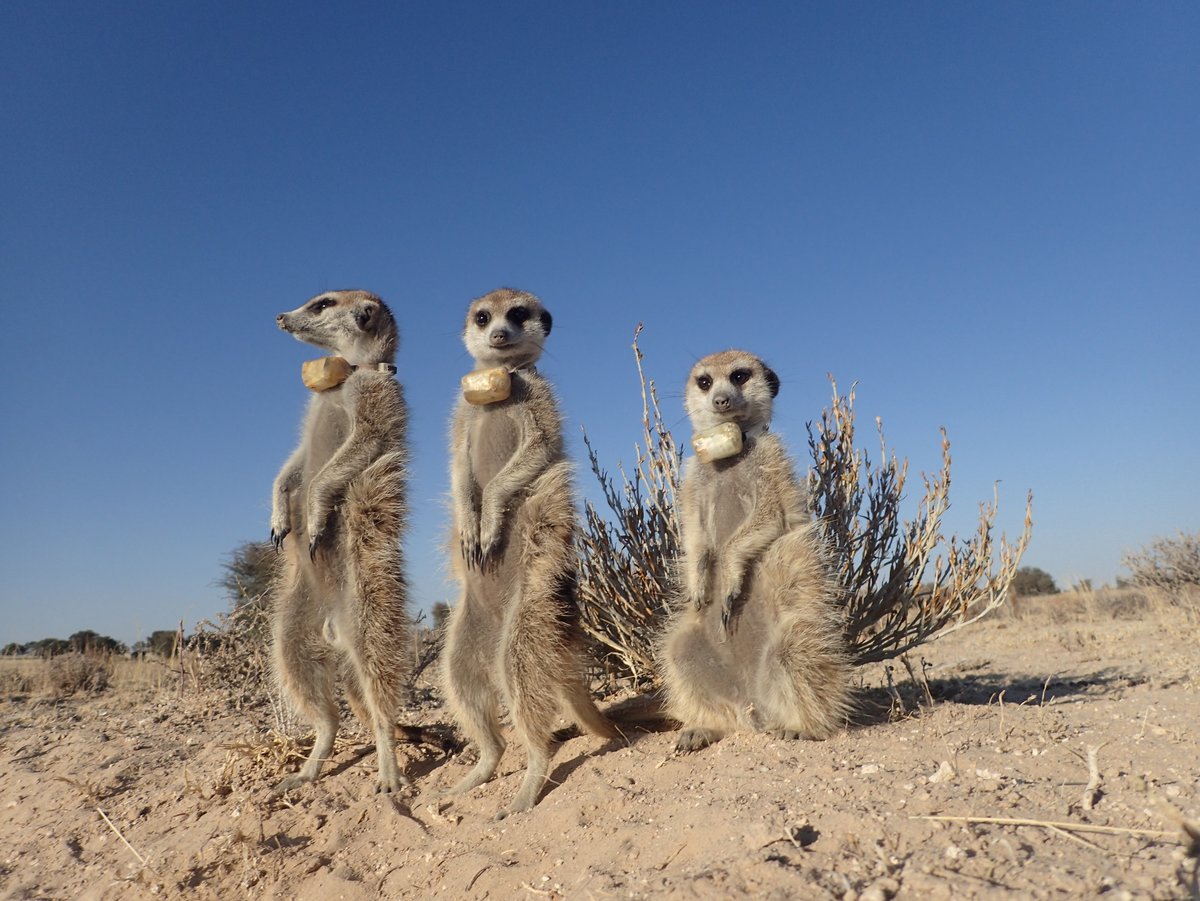
Copyright: Ariana Strandburg-Peshkin
Signalling and collective decision-making in moving animal groups
Deciding what to do and where to go as a group can be challenging, so many animals use sophisticated signalling systems, like shouts or calls, to pass information on to other members. Yet, the role of vocalizations in mediating collective movement remains an intriguing unknown—largely due to the difficulties of capturing vocal and movement data simultaneously from all members of social groups.
Using meerkat groups as a model system, the project Signalling and collective decision-making in moving animal groups will deploy state-of-the-art tools in machine learning and GPS tracking to record movements and vocalizations concurrently from entire groups of wild animals at a high resolution, and across varying degrees of spatial dispersion.
Building on the wealth of knowledge from the long-term Kalahari Meerkat Project, the team are tagging individual meerkats with small loggers that record position and acoustic information, then analyzing these data using a combination of deep learning and probabilistic modelling.
By combing boots-on-the-ground field biology with emerging computational approaches, the project seeks to provide insight into
1) how individual animals in a group make decisions about where to move and how to vocalize,
2) how these decisions are contingent on the behaviour of other members of the group,
3) ultimately, how these decisions scale up to produce collective decisions about where entire groups move.
